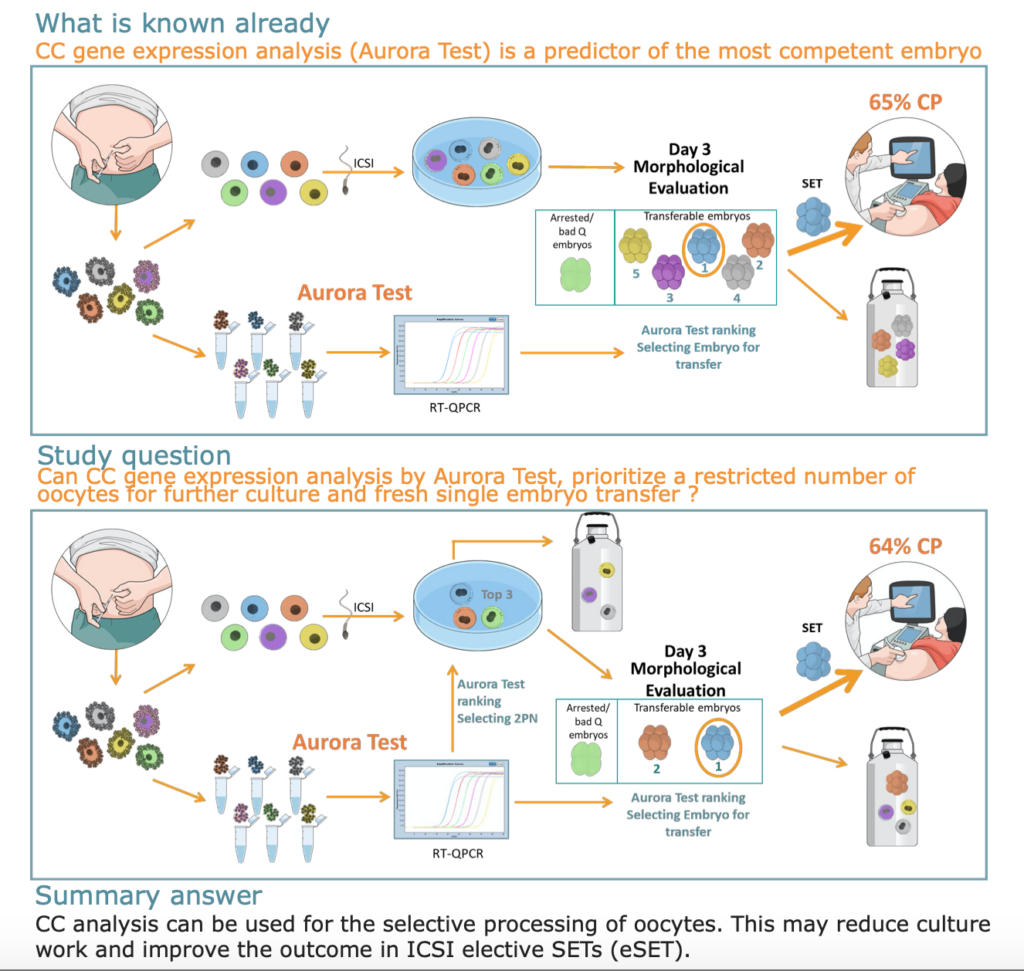July 2022
In July 2022, Fertiga attended the 38th annual ESHRE meeting (European Society of Human Reproduction and Embryology) in Milan to present its latest results.
The Belgian fertility company did so by using a comprehensive poster. The poster is titled “Cumulus cell analysis as a non-invasive oocyte selection strategy to reduce the number of oöcyten/embryos cultured and increase pregnancy rates”.
The Aurora Test is a predictor of the most competent embryo. Generally, the test has been used to select transferable Day 3-embryos. A retrospective analysis of Van Vaerenbergh et al. (2021) investigated whether the Aurora Test could also be applied to select oocytes on Day 1. Therefore, a subset of 80 patients was selected. On average, these patiets had 8 large pre-ovulatory follicles on trigger day and at least 4 2PN-oocytes. The team then studied the effect of processing only the three highest-ranking oocytes with the Aurora Test. These were then compared to the processing of all oocytes.
The study concludes that cumulus cell analysis may reduce culture work and improve the outcome in ICSI eSET. By performing the Aurora Test, patients benefit from a higher pregnancy rate in the fresh transfer cycle. The oocyte selection strategy results in a reduction of embryo culture and evaluation work.
For the full explanation, click here for the poster used by Fertiga at the 38th annual ESHRE meeting.



